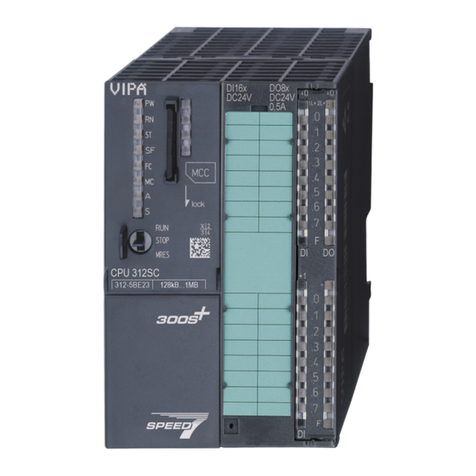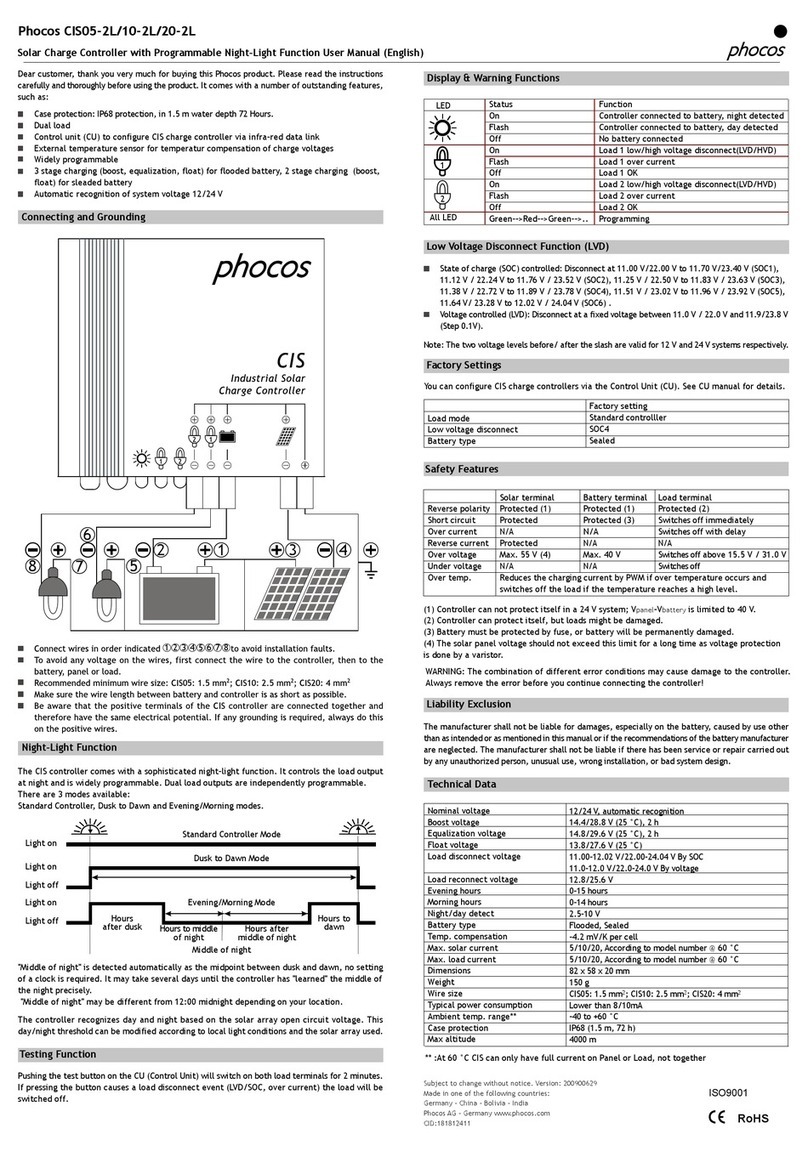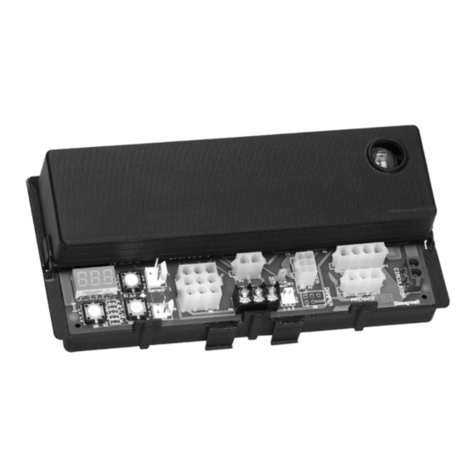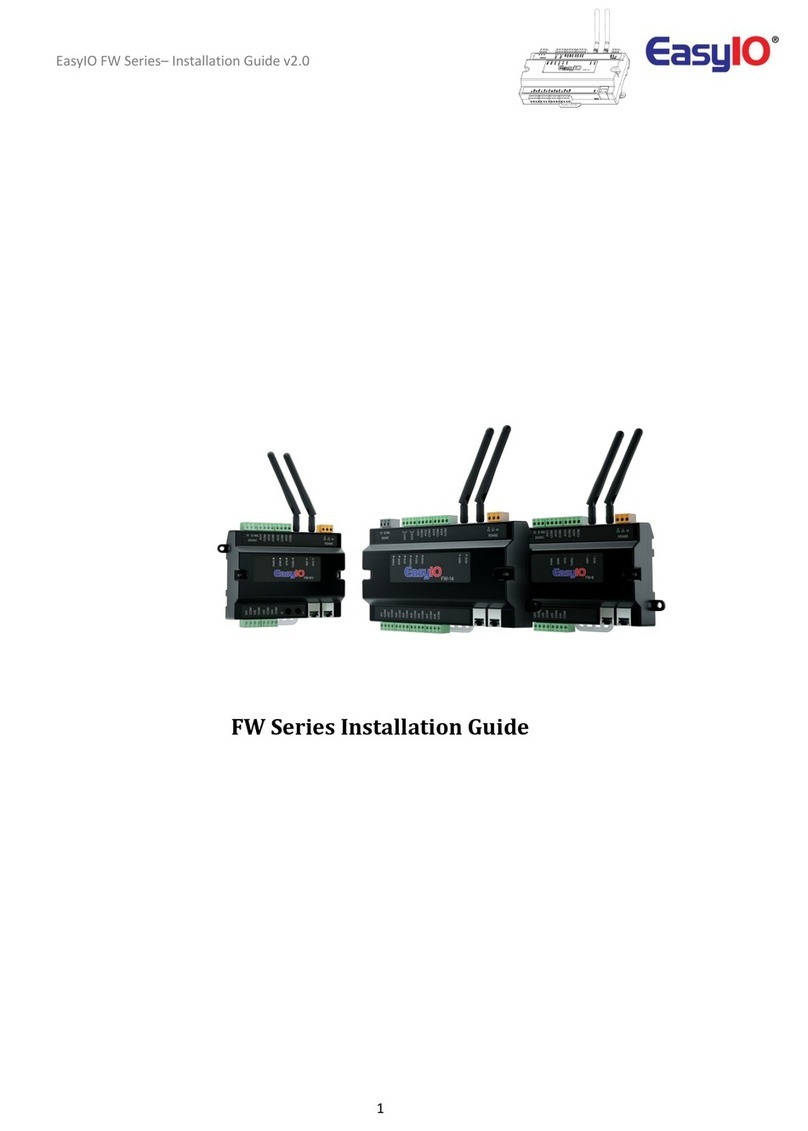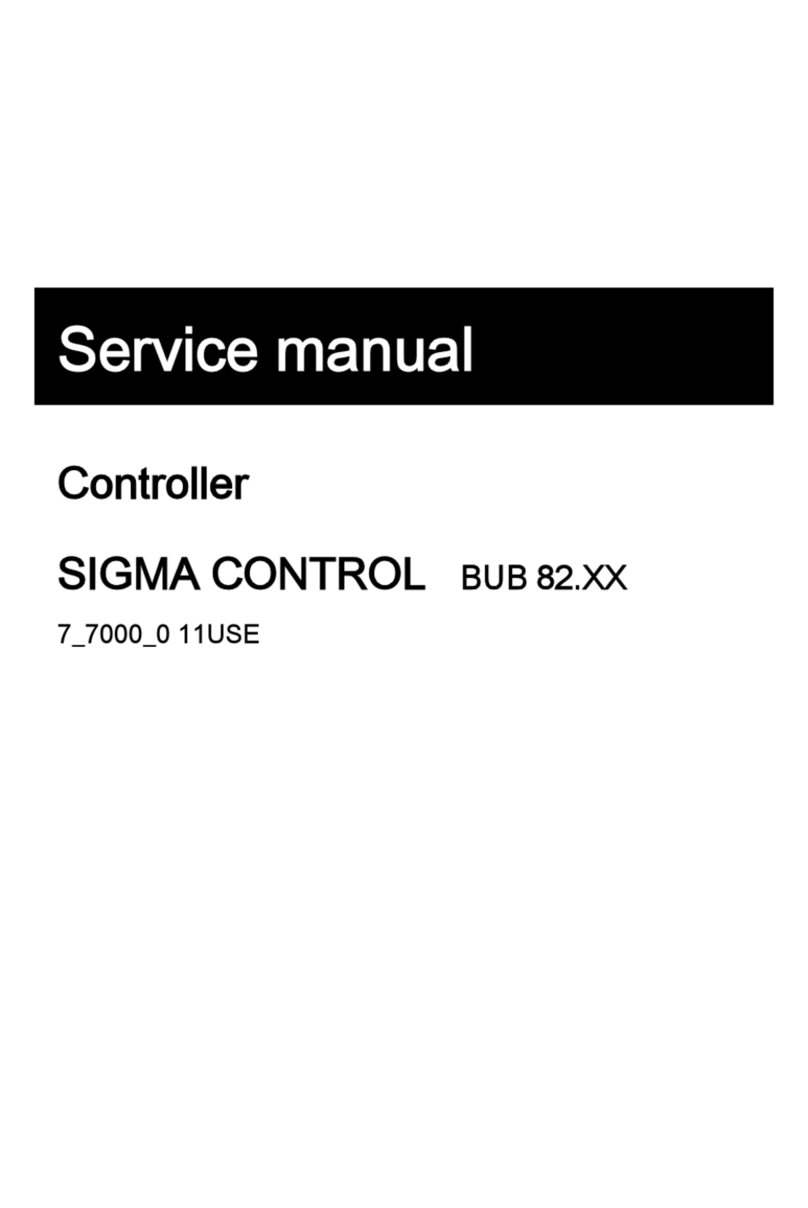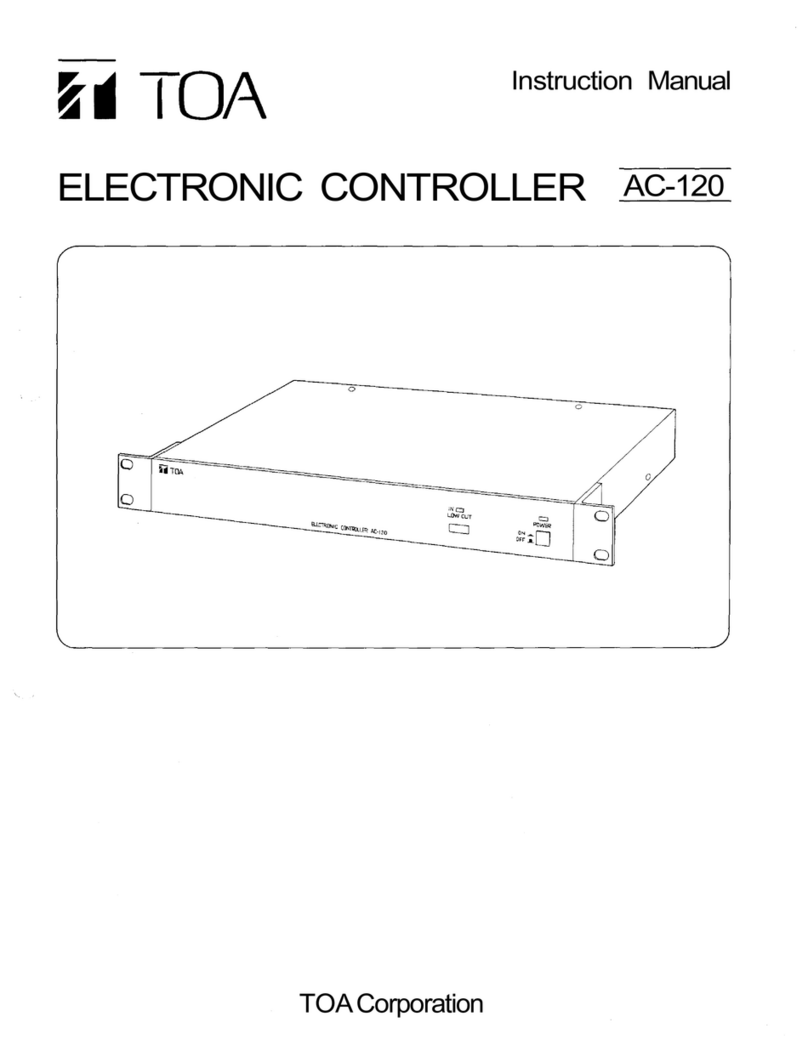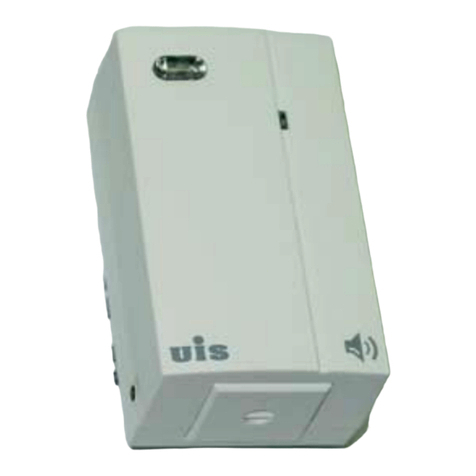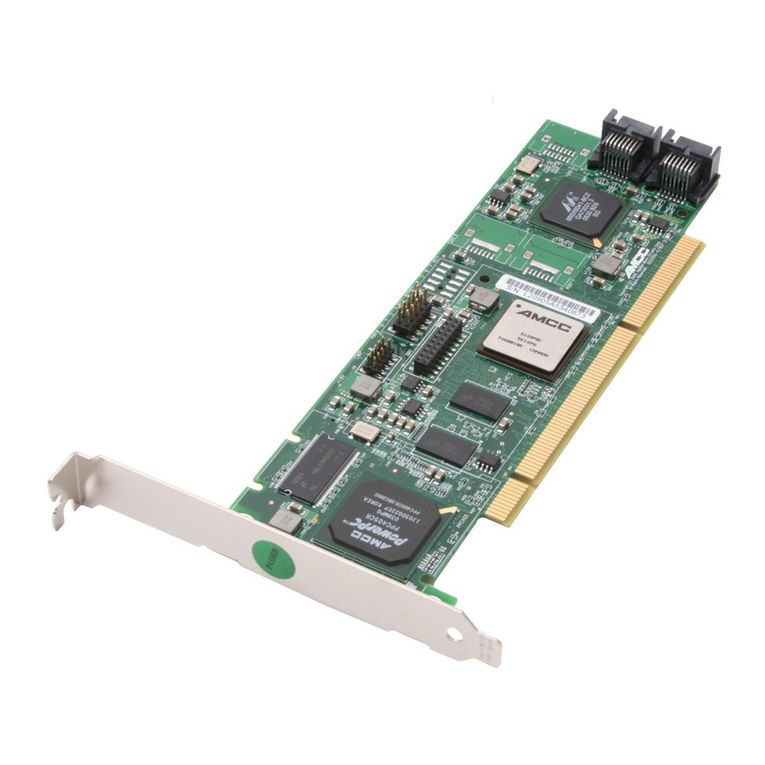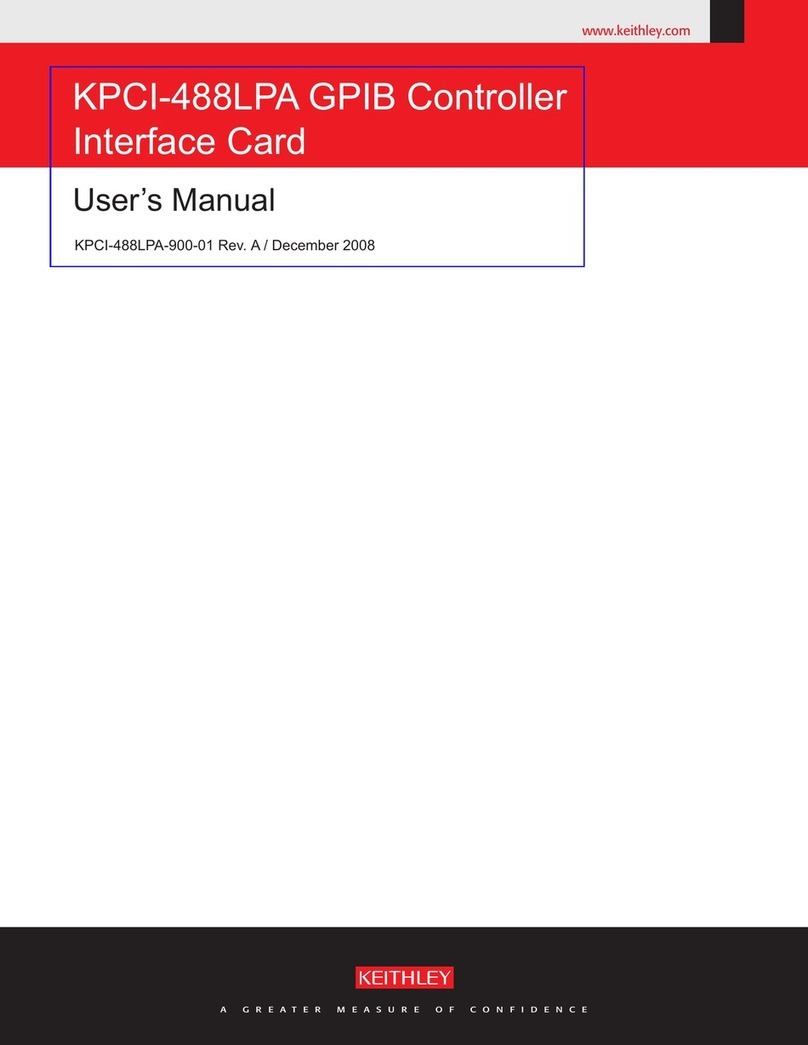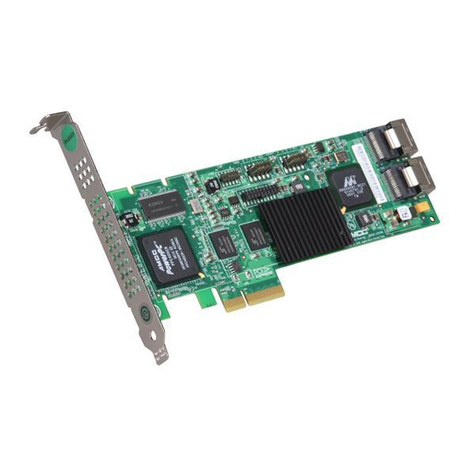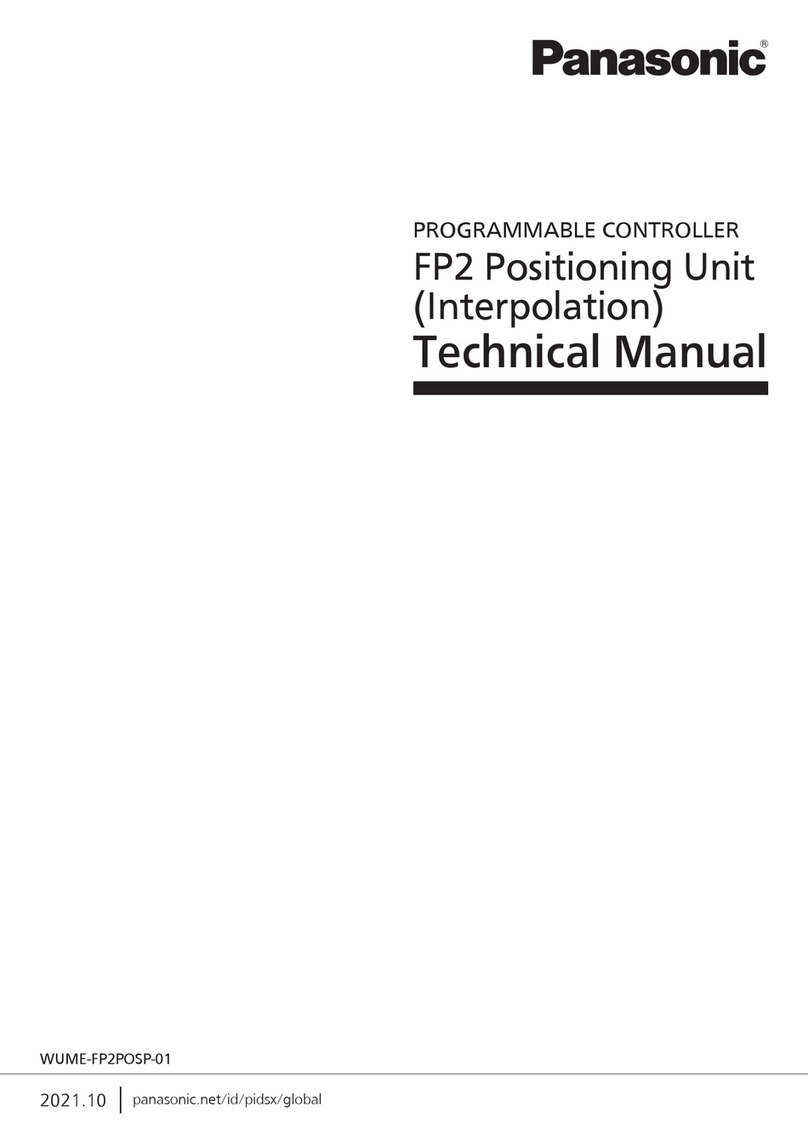Metron Eledyne MP300 User manual

Metron, Inc. Date: 09/22/04 Approved: MH DOC#: 605
Revision: BDate: 06/14/06Approved: MH Page: 1 of 24
MANUAL FOR MODEL MP300 to MP700
ELECTRIC MOTOR DRIVEN
FIRE PUMP CONTROLLERS
Starting Serial No. "MA"
This manual provides General Information, Installation, Operation, Maintenance and System Set-Up Information for METRON Model
Model MP300 through MP700 Electric Motor Driven Fire Pump Controllers.
TABLE OF CONTENTS
PART I General Information.....................................................................................................................................PAGE 3
PART II Functions......................................................................................................................................................PAGE 3
PART III Operation of the Controller..........................................................................................................................PAGE 4
PART IV Installation & Test Procedure......................................................................................................................PAGE 5
PART V Operator Interface Device (OID) Use and Navigation.......................................................................... PAGE 7
PART VI System Set Point Definitions.....................................................................................................................PAGE 16
PART VII Alarm and Event Log Messages................................................................................................................PAGE 21
APPENDIX 1 Changing Printer Paper and Ribbon Cartridge..........................................................................................PAGE 23
METRON, INC.
1505 West Third Avenue
Denver, Colorado 80223
www.metroninc.com
Telephone: (303) 592-1903 Fax: (303) 534-1947
METRON ELEDYNE LIMITED
18 Autumn Park, Dysart Road, Grantham, LINCS. NG31 7DD. United Kingdom
www.metroneledyne.co.uk

Page 2of 24
THIS PAGE IS BLANK

Page 3of 24
PART I: GENERAL INFORMATION
The basic function of the model MP Fire Pump Controller for electric motor driven fire pumps is to automatically start the fire pump
electric motor upon a drop in pressure in the water main, or from a number of other demand signals. This controller provides alarm
and/or alarm shutdown protection for various motor and power failures. Stopping of the motor after the demand period is over may
be either manual or automatic. This controller also includes an automatic weekly test starting feature.
PART II: FUNCTIONS
Equipment is provided in the Controller to provide the following functions:
A. Automatic Starting From:
a. Drop in water line pressure
b. Operation of optional remote start switches, such as remote start switch, deluge valve switch, fire alarm switch, etc.
c. Weekly test timer
B. OID –Operator Interface Device -Provided for display of alarm functions, system pressure, 3 phase AC volts, 3 phase motor
current and alarm conditions, etc. Includes buttons for Auto, Test, Manual and Off. Also features a 4 line by 20 character LCD
for display
C. Alarms and Signal Lights -Twelve (12) Standard lights are provided to give visual signals for; "Power On”, "System Fault”,
“Phase Failure", "Phase Reversal", “Pump Running”, "Pump Failed to Start","Motor Overload", "Low Pressure",
"Motor Lockout", “Local Start”, “Remote Start” and “Deluge Start”. When a transfer switch is supplied, additional lights
are provided for “Transfer Switch in Normal”, “Transfer Switch in Emergency” and “Emergency Iso Sw Open”. In
addition the mode buttons have LED’s on the button indicating “Auto”, Manual”, “Test”, or “Off” mode.12 additional lights
(9 when a transfer switch is supplied), configurable by the factory, are provided for "Pump Room Alarms". An audible alarm
horn is mounted on the front of the cubicle for sounding in the event of failure. Terminals are provided for remote failure
indication of the following:
"Power Available"
"Phase Reversal"
"Pump Running"
"Controller Not in Auto"
D. A data logger is provided as standard to record system pressure along with numerous alarm conditions and system events. The
data can be displayed on the OID or can be downloaded to a PC through the RS232, RS485 or USB port provided on the main
system board or printed to the internal printer (if supplied).
E. A weekly test timer is supplied to automatically start the pump any set day of the week, at a set time of day, and a preset run
time. See System Config Screen 106.
F. “Start” Push button –A green push button is provided on the exterior of the cabinet to manually start the pump. When this
button is pressed, the motor will continue to run until it is stopped using the Stop push button.
G. "Stop" Push button -A red pushbutton is provided on the exterior of the cabinet to stop the pump in Automatic only after
starting causes have returned to normal. This returns the controller to the automatic position. In the Manual mode this will also
stop the pump after starting via the Start push button.
H. Cabinet -A heavy gauge steel cubicle encloses the controller.

Page 4of 24
PART III: OPERATION OF THE CONTROLLER
A. When the controller is in the "Auto" mode, the main circuit breaker and isolation switch are in the "On" position, the controller
is in standby condition ready to start the pump automatically. A green pilot light above the "Auto" button will illuminate in
this mode. Also, the Power On light should be ON indicating that all power is available and the controller is ready to start the
pump.
When the water pressure drops below a level, which is set in System Config Screen 101, the Controller will actuate the starting
sequence based on the Model of the controller selected in Screen 301. If the pump fails to start after a set time delay (Screen
#103), the "Pump Failed to Start" light will illuminate, and the alarm horn will sound. In addition, the "System Fault” light
will illuminate.
The panel is wired so that optional remote start switches may be used, such as Deluge Valve, Remote Start pushbutton, Fire
Alarm switches, etc. The Deluge Valve Switch Option (Screen #124), is a normally closed switch that when opened starts the
pump similar to the pressure drop start. In addition, when “Supervisory Power Failure Startup” feature is enabled (System
Config Screen 116), the Controller will automatically start the pump upon loss of a Separate 120VAC Supervisory Power, after
an adjustable time delay (System Config Screen 117).
If the pump stops while running, and there is still an auto start demand, the control will attempt to restart the pump. If the pump
fails to start the "Pump Failed to Start" light will illuminate and the alarm will sound. If, while the pump is operating, the
motor current exceeds a set overload value (Screen #319), the “Motor Overload” light will illuminate and the alarm will sound
indicating motor overload.
The Controller may be configured as either "Manual" or "Automatic" stop as required (System Config Screen 104).
"Manual" stop is set as standard. When Automatic stop is enabled the stop timer is preset at the factory to 10 minutes. Longer
time settings can be set in System Config screen 105. When “Automatic Stop” is disabled, the pump will continue to run even
though the pressure switch or other remote starting switch returns to its normal position. The pump can be stopped immediately
only by pressing the stop button or by pressing the Off mode button. If set up for "Automatic" stop, the pump will be stopped
automatically upon restoration to normal of whatever demand switch started the pump providing it has run at least 10 minutes or
longer as set in System Config screen 105. If the demand period was less than the time set on the auto stop timer, the pump will
continue to run until the timer times out and then will stop.
B. When the "Test" mode button is pressed for two or more seconds, the pump will be started by causing a drop in water pressure
if the Solenoid Drain Valve Option (Screen #108) is selected. If the Solenoid Drain Valve Option is set to NO, the unit will start
automatically similar to the Deluge Valve switch start feature. Failure alarm circuits will be operative in the "Test" mode. This
method of starting provides a test of the Controller, thereby assuring proper operation when required. The pump will run
continuously in this position until the "Stop" push button is pressed or the “OFF” mode button is pressed.
C. Periodic Self Testing -The Weekly Test Start Timer can be set to give test runs on any day of the week and time of day desired.
A timing element is incorporated in the controls so that when the pump starts in this manner, it will run for a definite time before
it shuts down. See System Config Screens 109 through 112 to set the starting time and length of pump running. See item B.
above. The Weekly test feature will also use the Solenoid Drain Valve option to start the pump if it is enabled as described in B.
above. If Screen #113 (Stop Motor During Test on Alarm) is set to Yes, the motor will be stopped should any alarm condition
occur during the weekly test operation.
D. Provision for sequential starting is accomplished by the use of adjustable time delay on pressure drop starting or “Deluge Valve”
starting. On Multiple Pump installations these timers are set sequentially and progressively longer in time to prevent more than
one (1) pump from starting simultaneously with another pump. Failure of the lead pump to start will not prevent subsequent
pumps from starting. The time delay on starting is set in System Config Screen 103.
E. Emergency Manual Operation: Emergency manual operation is provided in case of failure of control circuitry. This lever is
manually moved to the "On" position and must be manually latched in the "ON" position or it will return to "Off" when released.
The lever should be moved from the "Off" position to the "On" position in as quickly a motion as possible to prevent burning the
contacts. The circuit breaker should be turned off to disconnect the circuit before releasing emergency lever. This lever is for
emergency use only. A mechanical interlock switch is connected to the emergency lever to operate the contactor electrically when
all circuitry is functioning properly. This is provided to prevent inadvertent slow closing of contactor and burning of contacts.
F. Series MP400 Primary Resistance Start: There are two contactors supplied along with a set of starting resistors. The starting
contactor is connected in series with the resistors to reduce the voltage to the motor for a preset time. After this preset time delay
(See Screen #314) the main contactor will close in parallel with the starting contactor and resistors and thus apply full voltage to
the motor. If the motor is not connected for this test, there will be no voltage drop across the resistors and full voltage will appear
at the output terminals of the contactors as soon as the starting contactor closes.

Page 5of 24
G. Series MP420 Part-Winding Start: There are two contactors for part-winding start. The start contactor will close immediately
on demand and the other will close after a preset transition time delay (See Screen #314). Full voltage will be present at the output
of both contactors.
H. Series MP430 Wye-Delta Open Transition: There are three contactors for wye-delta starting. The start contactor and the
shorting contactor will close immediately on demand. This connects the motor leads in the wye configuration. After the transition
time delay the shorting contactor opens and the run contactor closes, thus connecting the motor windings in the delta
configuration. The motor will now run at full speed and deliver rated horsepower to the load.
I. Series MP435 Wye-Delta Closed Transition: The operation of the Series MP435 is almost the same as the Series MP430.
There is an additional resistor contactor and a set of transition resistors which provides power to the motor windings during
transition from the wye connection to the delta connection. After the transition time delay this contactor closes, which connects
the resistors to the motor windings. After the resistor contactor closes the shorting contactor opens, which in turn allows the run
contactor to close, thus connecting the motor windings in the delta configuration. The motor will now run at full speed and deliver
rated horsepower to the load.
J. Series MP450 Autotransformer Start: There are three contactors for autotransformer starting. The start (autotransformer)
contactor and the autotransformer neutral contactor will close immediately on demand. This connects the motor leads through the
autotransformer to reduce the voltage to the motor. After the transition time delay the run contactor closes and then the start
contactor and autotransformer neutral contactor open, thus connecting the motor to full voltage. The motor will now run at full
speed and deliver rated horsepower to the load.
K. Series MP700 Solid State Soft Start: There are two contactors for solid state soft starting. The solid state starter line contactor
will close immediately on demand and ramp the motor up to speed depending on the solid state starter configuration parameters.
After the transition time delay the run contactor closes and bypasses the solid state starter, thus connecting the motor to full
voltage. The motor will now run at full speed and deliver rated horsepower to the load. When the stop command is received and
the controller is set up for the ramp stop option (Screen #106) the motor will ramp down in speed over a fixed time delay (Screen
#107) until it stops.
Note: When using the emergency manual start handle, the soft start unit may display an “OCF” fault condition. This is
normal. The unit is not malfunctioning. When the proper stop sequence is used according to paragraph E above, the fault
condition will be cleared and the soft start unit will be ready for a normal start.
PART IV: INSTALLATION AND TEST PROCEDURE
A. INSTALLATION
The Fire Pump Controller has been assembled and wired at the factory in accordance with the highest workmanship standards.
All circuits and functions have been thoroughly tested to assure correct operation when properly installed. The installer should
be completely familiar with the external hookup of the pump junction box to the terminal bar in the Controller. All local electric
codes should be used for proper installation, wiring and grounding of the controller prior to startup.
A weekly test drain solenoid valve may be provided to relieve water pressure to the pressure transducer thus initiating the start
sequence. This test simulates an actual start demand. Since the Controller operates the drain valve only momentarily, a small
amount of water is drained off. The water pressure sensing line to the Controller from the pump must be thoroughly flushed
before connection to the Controller in order to remove chips, particles, or other matter, that could enter the plumbing
components in the Controller.
Controllers configured with "Automatic Stop" enabled may be changed to "Manual" stop by disabling this feature in System
Config Screen 104. If deluge valve switches are to be used for starting, enable the Deluge Valve Option in Config Screen 121
and connect the remote normally closed switch to terminals 74 and 111.
B. TEST PROCEDURE
All of the following tests should be made on each unit after installation. If each test is satisfactory, the operator may place the
control switch in "Auto" mode and depend upon the panel operating properly when required. Also, any one or all of these tests
may be carried out at any time after installation, if so desired. NOTE: If the Supervisory Power Failure Start Option has
been Enabled (Screen #116) and 115 Volts A.C. is not connected to Controller, the "System Fault" light will illuminate
and the controller will start automatically after a time delay. The 115VAC must be turned on to prevent the pump from
starting.

Page 6of 24
INPUT/OUTPUT STATUS INDICATOR LIGHTS
Light Emitting Diodes (L.E.D.) lights have been installed on the microprocessor module to indicate the status of each input and
output terminal. Status indication for the standard functions is given below:
Terminal Number L.E.D. (light) "ON" Indication
(Microprocessor Func #)
(Out 02) Circuit Breaker Shunt Trip
(Out 03) Start Contactor relay (if applicable)
(Out 04) Run Contactor relay
(Out 05) Start signal to Soft Start (Model MP700 only)
(Out 06) Power to Soft Start (Model MP700 only)
(In 01) Emergency Start lever activated
(In 02) Start Pushbutton
(In 03) Stop Pushbutton
(In 04) Start Contactor closed
(In 05) Run Contactor closed
(In 06) Transfer Switch position (if applicable)
(In 07) Transfer Switch ready to transfer (if applicable)
(In 08) Transfer Switch Emergency Iso Switch Open (if applicable)
a. AUTOMATIC STARTING TESTS:
1. Place control in "Auto" position.
2. Bleed off pressure in system until pressure drops below the low set point.
3. Pump should start automatically and continue to run after pressure rises above the high set point, if arranged for
"Manual" stop. If arranged for "Automatic" stop, pump will continue to run for time set on Auto Stop Timer and
then stop.
4. Press the "Stop" push button to stop the pump.
5. Repeat tests for each demand switch such as deluge valve (if enabled), remote start, etc.
b. PERIODIC WEEKLY START TEST:
1. Pressure must be up and all other demand switches de-activated.
2. When the current day and time of day matches the settings in System Config screens 107 and 108, the solenoid drain
valve will energize (if enabled and supplied, see screen #108) and the pump will start. It will continue to run for the
amount of time set and then stop automatically.
c. SETTING PROGRAM WEEKLY TEST TIME: System Config screen 109 through 112.
d. REMOTE START SWITCH CIRCUITS: Field wiring terminals are provided on the controller so that optional remote
start switches such as Remote Pushbutton Stations, Deluge Valve Switch, Fire Alarm Switches, etc., may be used to start the
pump. Two (2) sets of terminals are provided. Terminals #112 and #31 are used for remote manual start push buttons (close
to start). Terminals #111 and #31 are used for remote Deluge Valve Switch or other remote automatic start switches (open to
start). Upon automatic start from this type of switch, the pump will be stopped either automatically after the demand switch
de-activates and Pump Auto Stop Timer times out, or manually at the Controller. Terminals #111 and #31 must have a
jumper installed if a remote Deluge switch is “Enabled” but not to be used. When the controller is shipped from the factory
Deluge Valve start is Disabled (System Config screen 121).
e. AC POWER FAILURE STARTING: If this feature has been enabled it can be tested by disconnecting the supervisory
power 115 V.A.C. to the Controller. After the preset time delay (which is specified in System Config screen 112), the
Controller will commence starting of the pump. The "System Fault" LED will illuminate and the alarm will sound.
f. NORMAL OPERATION –AUTOMATIC: Press "Auto" mode button on OID. A green "Automatic Mode" light will
illuminate and the pump will automatically start upon drop in pressure or operation of other start switches. If the Auto Stop
Timer is disabled (Manual Stop) the pump must be turned off at the Controller. When the Auto Stop Timer is enabled, upon
termination of the demand signal, the pump will run for the length of time left on the Auto Stop Timer and then will stop
automatically.

Page 7of 24
g. AN ADJUSTABLE SEQUENTIAL START TIMER IS SUPPLIED FOR MULTIPLE PUMP INSTALLATION:
Normally, the leading pump Controller will not have a delay timer and will commence starting of the pump immediately
upon operation of a demand signal (other than Power Failure which is time delayed). The subsequent Controllers will have a
time delay which is adjustable from 0 to 999 seconds. Each time delay should be set with progressively longer times on each
subsequent pump. The recommended time interval is ten (10) to fifteen (15) seconds. This may be extended or shortened as
required by the local authorities having jurisdiction.
h. PUMP ROOM ALARMS: Field terminals may be provided for various inputs from pump room alarms. These alarms
include: Low Pump Room Temperature, Reservoir Low, Reservoir Empty, Low Suction Pressure, Relief Valve Discharge
and/or Flow Meter On etc. A maximum of twelve (12) (or nine (9) if a transfer switch is supplied), pump room alarms is
available. Each auxiliary alarm is configurable so that the alarm horn may or may not sound and the light will come on when
the alarm sensor contacts close. These pump room alarms can be silenced with the “Silence” push button on the OID if they
have been configured as silenceable.
PART V: OPERATOR INTERFACE DEVICE (OID) USE AND NAVIGATION
The Operator Interface Device (OID) provides visual indication of the alarms, status of system parameters, and an interface to
change set points to configure the controller to operate appropriately for various installation requirements.
Labeled LED
Annunciator Common Tasks Performed Using The OID
Silencing Horn: If a horn is sounding and the alarm is silenceable, a quick
press of the [SILENCE/RESET/ESC] will silence the horn (less than 1
second press).
Resetting Alarms: If the alarm condition has cleared, press and hold the
[SILENCE/RESET/ESC] button 2 to 5 seconds to reset alarms.
Operating Mode Change: The operational mode that the controller is in can
be changed by pressing the [AUTO] [MANUAL] or [OFF] buttons. An LED
will illuminate on the appropriate button indicating the mode of operation the
controller is in.
Test Mode: When controller is in Auto Mode, pressing and holding the
[TEST] button for two or more seconds will open the pressure drain solenoid
thus dropping the pressure, which causes the controller to start the pump.
Pressing and releasing the [TEST] button in Manual Mode directly controls
the opening and closing of the drain solenoid. The pump will not
automatically start when in Manual Mode.
Lamp Test: To illuminate and check all the OID LED’s and the horn, press
and hold the [SILENCE/RESET/ESC] button 5 or more seconds or until all
the lights turn on.
System Operation and Digital Display With
Control Type Buttons Navigation Buttons

Page 8of 24
2 CONFIG
1) ANALOG SIGNALS
2) AUXILLIARY ALARMS
1 CONFIG
1) SYSTEM SETPOINTS
2) USER PREFERENCES
3) TECH SCREENS
# 1 EVENT DETAILS
System in Off
Mode Occurred
10/16/04 13:15:15
# 1 EVENT LOG
System in Off
Mode Occurred
10/16/04 13:15:15
# 1 ALARM DETAILS
Pump Failed To
Start Alarm Occurred
10/16/04 07:32:15
# 1 ALARM LOG
Pump Failed To
Start Alarm Occurred
10/16/04 07:32:15
# 1 ALARM DETAILS
Pressure: 83.2psi
System Auto:Yes
Pump Running:No
# 1 EVENT DETAILS
Pressure: 83.2psi
System Auto:Yes
Pump Running:No
# 1 ALARM DETAILS
Phase A Amps 0
Phase B Amps 0
Phase C Amps 0
# 1 ALARM DETAILS
Phase AB Volt 460
Phase BC Volt 461
Phase AC Volt 464
# 2 ALARM LOG
Supvr Power Failure
Alarm Cleared
10/16/04 07:09:48
# 2 EVENT LOG
Pump Failed To
Start Alarm Occurred
10/16/04 07:32:15
# 3 ALARM LOG
Motor Overload
Alarm Occurred
10/16/04 06:49:03
# 3 EVENT LOG
Supvr Power Failure
Alarm Cleared
10/16/04 07:09:48
PRESSURE LOG
10/16/04 17:52:45
112 psi
Skip Rate:[EACH ]
PRESSURE LOG
10/16/04 17:52:30
112 psi
Skip Rate:[EACH ]
PRESSURE LOG
10/16/04 17:52:15
113 psi
Skip Rate:[EACH ]
SYSTEM LOGS
1) Alarm Log
2) Event Log
3) Pressure Log
1 SYSTEM STATUS B1
PRES STRT AB 460V
110 100 BC 461V
psi psi AC 460V
4 SYSTEM STATUS
Countdown Timer
0sec Until Start
0min Until Start
3 SYSTEM STATUS
Pump Countdown Tmr
0sec Until Start
0min Until Stop
6 SYSTEM STATUS
Firmware Ver SV 1.1
Commissioned Date:
10/15/04
5 SYSTEM STATUS
Controller Power
On Time: 18.5 Hrs
Mon10/20/04 17:53:26
Continued on next
page.
| |
| |
| |
| |
| |
| |
| |
| |
| |
AUTO MANUAL TEST
STATUS
SYSTEM LOGS
SYSTEM
1
CONFIG
2
METRON OID100
SILENCE/
OFF ESC
RESET/
POWER
PRINT
3
ENTER
CHANGE/
2 SYSTEM STATUS
Phase A 125 Amps
Phase B 124 Amps
Phase C 125 Amps
# 1 EVENT DETAILS
Phase AB Volt 460
Phase BC Volt 461
Phase AC Volt 464
# 1 EVENT DETAILS
Phase A Amps 0
Phase B Amps 0
Phase C Amps 0
OID Screen Map

Page 9of 24
301 TECH SCREENS
Controller Model
Number
[ MP300]
303 TECH SCREENS
Nominal System
Voltage
[480]VAC
304 TECH SCREENS
CPT Primary Voltage
Rating
[ 480]
305 TECH SCREENS
Current Transformer
Ratio
[1200] /5
306 TECH SCREENS
Restart Time
Delay
[ 3]sec 0-99
307 TECH SCREENS
Motor Full Load
Amps
[ 124]Amps
308 TECH SCREENS
Low Voltage
Trip Percent
[85]% 50-99
309 TECH SCREENS
Low Voltage
Time Delay
[ 5]sec 0-99
315 TECH SCREENS
Single Phase Alarm
% of FLA
[15]% 0-99
314 TECH SCREENS
Start Transition
Time Delay
[ 2]sec 0-10
313 TECH SCREENS
Phase Loss
Time Delay
[5]sec 0-99
312 TECH SCREENS
Phase Loss % of
Nominal Voltage
[25]% 0-99
311 TECH SCREENS
High Voltage
Time Delay
[ 5]sec 0-99
310 TECH SCREENS
High Voltage Alarm
% of Nominal
[125]% 0-999
302 TECH SCREENS
Transfer Switch
Supplied
[Yes]
2 CONFIG
1) ANALOG SIGNALS
2) AUXILLIARY ALARMS
1 CONFIG
1) SYSTEM SETPOINTS
2) USER PREFERENCES
3) TECH SCREENS
210 USER PREFERENCES
Selective Range
Printing
[ 1] Before 1-99
209 USER PREFERENCES
Auto Print Each
Event Log Entry
[No ]
208 USER PREFERENCES
Auto Print Each
Pressure Log Sample
[No ]
207 USER PREFERENCES
Time Between
Pressure Log Samples
[ 15] seconds 15-999
206 USER PREFERENCES
System Pressure Drop
Event Time Span
[15] seconds 0-20
205 USER PREFERENCES
System Pressure Drop
Needed To Log Event
[5]psi 0-999.9
204 USER PREFERENCES
Log System Pressure
Drop Events
[Yes]
203 USER PREFERENCES
Set System Day
Of The Week
[Sun]
202 USER PREFERENCES
Set System Date
[02/16/03]
211 USER PREFERENCES
Selective Range
Printing
[ 1] After 1-99
201 USER PREFERENCES
Set System Real
Time Clock
[17:03:52]
102 SYSTEM SETPOINTS
Pump Stop
Pressure
[110.0]psi 0-999.9
115 SYSTEM SETPOINTS
Supervisory Power
Delay Time
[ 2] sec 0-99
114 SYSTEM SETPOINTS
Supervisory Power
Option
[No]
111 SYSTEM SETPOINTS
Auto Weekly
Test Start Time
[10:00:00]
112 SYSTEM SETPOINTS
Auto Weekly Test
Length Of Run Time
[30] minutes 30-99
113 SYSTEM SETPOINTS
Stop Motor during
Test on Alarm
[No]
103 SYSTEM SETPOINTS
Pump Start
Delay Time
[ 10] seconds 1-999
104 SYSTEM SETPOINTS
Pump Automatic
Stop Enabled
[Yes]
105 SYSTEM SETPOINTS
Pump Minimum
Run Time
[30]minutes 30-99
109 SYSTEM SETPOINTS
Automatic Weekly
Test Run
[Yes]
101 SYSTEM SETPOINTS
Pump Start
Pressure
[100.0]psi 0-999.9
414 ANALOG SIGNALS
Phase BC Voltage
Offset:
[ -.4975]
413 ANALOG SIGNALS
Phase AB Voltage
Slope:
[0.12430]
412 ANALOG SIGNALS
Phase AB Voltage
Offset:
[-.4975]
411 ANALOG SIGNALS
Minimum Volts
[10] 0-9999
410 ANALOG SIGNALS
Analog Input 03
Minimum Counts
[ 0]
402 ANALOG SIGNALS
Analog Input 1 651
Minimum Counts
[ 200]
401 ANALOG SIGNALS
Analog Input 01
Offset:
[- 75.6030]
400 ANALOG SIGNALS
Analog Input 01
Slope:
[0.2135677]
502 AUX USER PROGRAM
AUX# 1
Input Number
[30] 0-40
512 AUX USER PROGRAM
AUX# 1
Output3 Number
[ 0] 0-19
515 AUX USER PROGRAM
AUX# 1
Text Message Number
[ 0] 0-27
514 AUX USER PROGRAM
AUX# 1
Record In Alarm Log
[No ]
513 AUX USER PROGRAM
AUX# 1
Record In Event Log
[No ]
507 AUX USER PROGRAM
AUX# 1
Horn Enabled
[No ]
511 AUX USER PROGRAM
AUX# 1
Output2 Number
[ 0] 0-19
510 AUX USER PROGRAM
AUX# 1
Output1 Number
[ 0] 0-19
508 AUX USER PROGRAM
AUX# 1
Horn Silence
[No ]
509 AUX USER PROGRAM
AUX# 1
LED Number
[ 0] 0-24
504 AUX USER PROGRAM
AUX# 1
Trip Time
[ 0]sec 0-999
505 AUX USER PROGRAM
AUX# 1
Reset Time
[ 0]sec 0-999
506 AUX USER PROGRAM
AUX# 1
Auto Reset Enabled
[Yes]
503 AUX USER PROGRAM
AUX# 1
Input Contact Type
[NO ]
501 AUX USER PROGRAM
AUX# 1
Enabled
[Yes]
110 SYSTEM SETPOINTS
Auto Weekly Test
Day Of The Week
[Mon]
106 SYSTEM SETPOINTS
Ramp Stop Option
MP700
[Yes]
108 SYSTEM SETPOINTS
Solenoid Drain
Valve Option
[Yes]
107 SYSTEM SETPOINTS
Ramp Stop Option
Time
[10]sec 0-99
212 USER PREFERENCES
High Discharge
Pressure Alarm Opt.
[ No]
213 USER PREFERENCES
High Discharge
Alarm Pressure
[100] 0-999
214 USER PREFERENCES
High Discharge
Pressure Time Delay
[ 8]sec 0-99
215 USER PREFERENCES
Low Discharge
Pressure Alarm Opt.
[ No]
403 ANALOG SIGNALS
Analog Input 01 651
Maximum Counts
[ 800]
404 ANALOG SIGNALS
Analog Input 1 651
Minimum PSI
[ 3] -5 - 10
405 ANALOG SIGNALS
Analog Input 02
Slope
[ 0.0094996]
406 ANALOG SIGNALS
Analog Input 02
Offset
[- 0.4179]
407 ANALOG SIGNALS
Analog Input 02 651
Minimum Counts
[ 0]
408 ANALOG SIGNALS
Analog Input 03
Slope
[0.0094996]
409 ANALOG SIGNALS
Analog Input 03
Offset
[- 0.4179]
OID Screen Map (continued)

Page 10 of 24
318 TECH SCREENS
Use Motor Current
for Pump Run Signal
[Yes]
316 TECH SCREENS
Single Phase Loss
Time Delay
[5]seconds 0-99
220 USER PREFERENCES
LCD Back Light Mode
0=Always on
[0]] 1=Power Save
221 USER PREFERENCES
Language Select
[English]
222 USER PREFERENCES
Change User Password
Level 1
[****]
120 SYSTEM SETPOINTS
Shutdown On Low
Intake Trip Time
[ 20]seconds 0-999
119 SYSTEM SETPOINTS
Shutdown On Low
Intake Pressure/Lvl
[No ]
118 SYSTEM SETPOINTS
Pressure Transducer
Failure Pump Start
[ No]
117 SYSTEM SETPOINTS
Supv. Power Failure
Start Delay Time
[ 1]minutes 0-500
116 SYSTEM SETPOINTS
Supervisory Power
Failure Startup
[Yes]
ANALOG INPUT COUNTS
649 1176 1221 0
0 0 0 0
0 0
415 ANALOG SIGNALS
Phase BC Voltage
Slope:
[0.12430]
121 SYSTEM SETPOINTS
Low Intake Shutdown
Auto Reset
[Yes]
124 SYSTEM SETPOINTS
Deluge Valve
Engine Start
[Yes]
123 SYSTEM SETPOINTS
Pressure Switch
Engine Start
[No ]
122 SYSTEM SETPOINTS
Low Intake Shutdown
Auto Reset Time
[ 20]seconds 0-999
216 USER PREFERENCES
Low Discharge
Alarm Pressure
[100] 0-999
217 USER PREFERENCES
Low Discharge
Pressure Time Delay
[ 8]sec 0-99
219 USER PREFERENCES
No Load Time
Delay
[ 8]sec 0-99
218 USER PREFERENCES
No Load Amps %
of Full Load
[ 5] 0-99
317 TECH SCREENS
Motor Run % of
Full Load
[20]% 0-99
319 TECH SCREENS
Overload Alarm
% of FLA
[125]% 0-999
320 TECH SCREENS
Overload Alarm
Time Delay
[5]sec 0-99
322 TECH SCREENS
Motor Run Amps
Time Delay
[3]sec 0-99
323 TECH SCREENS
Motor Start
Time Delay
[3]sec 0-99
324 TECH SCREENS
Under Frequency
% of Nominal
[95] 0-99
325 TECH SCREENS
Under Frequency
Time Delay
[3]sec 0-99
326 TECH SCREENS
Over Frequency
% of Nominal
[105]% 0-999
321 TECH SCREENS
Start on Single
Phase Loss
[No]
327 TECH SCREENS
Over Frequency
Time Delay
[5]sec 0-99
328 TECH SCREENS
Alarm log 31/2
Event log 50/ 4
Pr. log 0/29333
329 TECH SCREENS
System Commissioned
Date
[00/00/00]
330 TECH SCREENS
Change Tech Password
[******]
331 TECH SCREENS
Password Logout
Time
[5]min 1-15
416 ANALOG SIGNALS
Phase AC Voltage
Offset:
[ -.4975]
417 ANALOG SIGNALS
Phase AC Voltage
Slope:
[0.12430]
418 ANALOG SIGNALS
Minimum Amps
[10] 0-999
421 ANALOG SIGNALS
Phase B Amps
Offset:
[ -.4975]
424 ANALOG SIGNALS
Phase C Amps
Slope:
[0.12430]
423 ANALOG SIGNALS
Phase C Amps
Offset:
[ -.4975]
422 ANALOG SIGNALS
Phase B Amps
Slope:
[0.12430]
420 ANALOG SIGNALS
Phase A Amps
Slope:
[0.12430]
419 ANALOG SIGNALS
Phase A Amps
Offset:
[ -.4975]
425 ANALOG SIGNALS
Set Volts/Amps Slope
Offset to Fact
Dflt[Yes]
The [SYSTEM STATUS], [SYSTEM LOGS], and [CONFIG] buttons navigate the user to the top screen of a column of similarly
grouped screens or menus.
SYSTEM STATUS: The [SYSTEM STATUS] button can be pressed at any time to return the screen to the home System Status
screen #1. System Status screens display the real time information variables about the pump system.
SYSTEM LOGS: The [SYSTEM LOGS] button displays the System Logs menu. Once the menu is displayed, buttons with
numbers on them can be used to enter the selected data log. See the following page for details on navigating the System
Logs.

Page 11 of 24
CONFIGURATION: The [CONFIG] button displays the Config menu which groups the different types of set points that
configure the system to operate in the desired manner. Use the [UP] and [DOWN] buttons to scroll between the two menu
screens. Buttons with numbers on them can be used to enter the selected configuration screen group. See the System
Setpoint Definitions section for descriptions on the functionality of each set point.
1 SYSTEM STATUS B1
PRES STRT AB 460V
110 100 BC 461V
psi psi AC 460V
SYSTEM LOGS
1) Alarm Log
2) Event Log
3) Pressure Log
1 CONFIG
1) SYSTEM SETPOINTS
2) USER PREFERENCES
3) TECH SCREENS
2 SYSTEM STATUS
Phase A 125 Amps
Phase B 124 Amps
Phase C 125 Amps
# 1 ALARM LOG
Pump Failed To
Start Alarm Occurred
20/16/04 07:32:15
2CONFIG
1) ANALOG SIGNALS
2) AUXILLIARY ALARMS
3) COMM PORTS
3 SYSTEM STATUS
Pump Countdown Tmr
0sec Until Start
0min Until Stop
# 1 EVENT LOG
System in Off
Mode Occurred
10/16/04 13:15:15
101 SYSTEM SETPOINTS
Pump Start
Pressure
[100.0]psi 0-999.9
4 SYSTEM STATUS
Pump Run Hrs: 5.3
# Of Starts: 8
Mon 10/17/04 17:53:26
PRESSURE LOG
10/16/04 17:52:45
112 psi
Skip Rate:[EACH ]
201 USER PREFERENCES
Set System Real
Time Clock
[17:03:52]
5 SYSTEM STATUS
Controller Power
On Time 18.5 Hrs
10/15/04 17:53:26
See the following page for an example of
scrolling through the Alarm, Event, and
Pressure Logs
301 TECH SCREENS
Controller Model
Number
[MP300]
6 SYSTEM STATUS
Firmware Ver SV 1.1
Commissioned Date:
11/15/02
401 ANALOG SIGNALS
Analog Input 01
Slope:
[0.21346771]
501 AUX USER PROGRAMS
AUX# 1
Enabled
[Yes]

Page 12 of 24
SYSTEM LOGS: The Model MP Electric controller has three separate data logs; 1) alarm log, 2) event log, and 3) pressure log.
The alarm log is a subset of the event log and only displays the last ten alarms that have occurred or cleared. The event log
records all alarm and system function type events
SYSTEM LOGS
1) Alarm Log
2) Event Log
3) Pressure Log
SYSTEM LOGS: The [UP] and [DOWN] arrow buttons can be used to scroll through the
three data logs. The [CHANGE/ENTER] button enters and exits the alarm/event details in
either the Alarm or Event logs. In the Pressure Log the [CHANGE/ENTER] button changes
the skip rate used to scroll through the logged pressure readings.
# 1 ALARM LOG
Pump Failed To
Start Alarm Occurred
10/16/04 07:32:15
# 1 EVENT LOG
System in Off
Mode Occurred
10/16/04 13:15:15
PRESSURE LOG
10/16/04 17:52:45
112 psi
Skip Rate:[EACH ]
# 1 ALARM DETAILS
Pump Failed To
Start Alarm Occurred
10/16/04 07:32:15
# 1 EVENT DETAILS
System in Off
Mode Occurred
10/16/04 13:15:15
PRESSURE LOG
10/16/04 17:52:30
112 psi
Skip Rate:[EACH ]
# 1 ALARM DETAILS
AB V 460 A 32
BC V 461 B 32
AC V 460 C 33
# 1 EVENT DETAILS
AB V 460 A 32
BC V 461 B 32
AC V 460 C 33
PRESSURE LOG
10/16/04 17:52:15
113 psi
Skip Rate:[EACH ]
# 1 ALARM DETAILS
Pump Running: Yes
# 1 EVENT DETAILS
Pump Running: Yes
# 2 ALARM LOG
Superv Power Failure
Alarm Cleared
10/16/04 07:09:48
# 2 EVENT LOG
Pump Failed To
Start Alarm Occurred
10/16/04 07:32:15
# 3 ALARM LOG
Superv Power Failure
Alarm Occurred
10/16/04 06:49:03
# 3 EVENT LOG
Superv Power Failure
Alarm Cleared
10/16/04 07:09:48

Page 13 of 24
Printing System Log Data: The following applies if a printer has been installed or a PC is connected to the RS232, RS485 or
USB com ports using the appropriate cable. When the [PRINT] button is pressed when looking at data in one of the three logs, a
menu for what is to be printed is displayed. Pressing [1] prints just the alarm/event/pressure reading currently being displayed.
Pressing [2] prints a range of data before and after the currently displayed alarm/event/pressure reading currently displayed. The
range can be changed in the User Preferences setpoints 210 and 211. To download the Log Data using the USB port, log onto
Metron’s web site at www.metroninc.com and click on the Fire Pump Controller link. Then click on the “Click Here to Download
Metron’s USB application” link. Install this onto your PC. If you use the RS232 port to download the data, use Microsoft
windows Hyperlink program and configure for Baud Rate as 9600, Data bits as 8, Parity as None, Stop Bits as 1 and Flow Control
as None. When the print button on the OID is pressed, data will be sent to the PC via the port you have connected to.
Typical Event/Alarm Log
Message Printout
#1 EVENT LOG
Superv Power Failure
Alarm Occurred On
10/16/04 07:32:15
PRINT OPTIONS
1) PRINT THIS EVENT
2) PRINT EVENT RANGE
10 BEFORE,10 AFTER
#1 EVENT LOG
AC Power Restored
Occurred On
11/16/02 07:32:15
#2 EVENT LOG
AC Power Restored
Occurred On
11/16/02 07:32:15
#1 EVENT LOG
Superv Power Failure
Alarm Occurred On
10/16/04 07:32:15
Typical Event/Alarm Log
Details Printout
#1 EVENT DETAILS
Superv Power Failure
Alarm Occurred On
10/16/04 07:32:15
PRINT OPTIONS
1) PRINT THIS EVENT
2) PRINT EVENT RANGE
10 BEFORE,10 AFTER
#1 EVENT DETAILS
AB V 460 A 32
BC V 461 B 32
AC V 460 C 33
# 1 EVENT DETAILS
Pump Running: Yes
Pressure: 118 psi
#1 EVENT DETAILS
AC Power Restored
Occurred On
11/16/02 07:32:15
AB V 460 A 32
BC V 461 B 32
AC V 460 C 33
Pump Running:Yes
Pressure: 118 psi
#2 EVENT DETAILS
AC Power Restored
Occurred On
11/16/02 07:32:15
AB V 460 A 32
BC V 461 B 32
AC V 460 C 33
Pump Running:Yes
Pressure: 118psi
Typical Pressure Log
Printout
PRESSURE LOG
01/01/03 17:52:45
600 psi
Skip Rate:[EACH ]
PRINT OPTIONS
1) PRINT THIS ENTRY
2) PRINT ENTRY RANGE
10 BEFORE,10 AFTER
PRESSURE LOG
01/01/03 17:52:30
599 psi
Skip Rate:[EACH ]
PRESSURE LOG
01/01/03 17:52:45
600 psi
01/01/03 17:52:30
599 psi
01/01/03 17:52:15
599 psi
01/01/03 17:52:00
601 psi

Page 14 of 24
CONFIGURATION SCREENS: All parameters that control the operation of the controller can be viewed and changed within
the Configuration set point screens. Each set point is protected by a user password to prevent unauthorized changes. The system
set points are separated into five different group
s.
1 CONFIG
1) SYSTEM SETPOINTS
2) USER PREFERENCES
3) TECH SCREENS
2 CONFIG
1) ANALOG SIGNALS
2) AUXILLIARY ALARMS
1) SYSTEM SETPOINTS (Level 1 password): These setpoints adjust the conditions
for starting and stopping the pump.
2) USER PREFERENCES (Level 1 password): These setpoints adjust settings not
related to pump operation.
3) TECH SCREENS (Level 2 password): These setpoints are for factory/technician
purposes only and are used to fine tune special systems.
1) ANALOG SIGNALS (Level 2 password): These setpoints calibrate the analog
pressure, voltage and amp readings.
2) AUXILLIARY ALARMS (Level 2 password): These 12 user programs are used
to setup any auxiliary signals that need to be monitored.
Changing Values:
1) Navigate to the configuration set point screen that contains the value that needs to be changed.
2) Press [CHANGE/ENTER]. If a password has not been entered for a while, the “ENTER PASSWORD” screen will
be displayed. Use the [1] [2] and [3] buttons to enter the appropriate password.
3) Once the correct password level has been attained, the “CHANGE VALUE” screen for the value to be changed will
be displayed. An underscore cursor will appear beneath the first digit on the entry.
Use [UP] or [DOWN] arrow buttons to scroll the value of the digit with the cursor. Press [CHANGE/ENTER] to
accept each digit’s entry. The cursor will move to the right so the next digit can be changed. Pressing
[SILENCE/RESET/ESC] or the [SYSTEM STATUS] button will exit change mode without changing the original
value.
101 SYSTEM SETPOINTS
Pump Start
Pressure
[100.0]psi 0
-
999.9
101 CHANGE VALUE
Pump Start
Pressure
[ 60] psi 0
-
999
ENTER PASSWORD:
****
Example of how to change a setpoint value:
Press the [1], [2], or [3] keys to
enter the password. Press the [UP] and [DOWN]
arrow keys to change each
digit at the cursor, press
[CHANGE/ENTER] to accept
the digit and move the cursor
to the right. Press
[SILENCE/RESET/ESC] to
escape the change value screen
and to keep the original value.

Page 15 of 24
Printing Configuration Setpoints: The following applies if a printer has been installed or a PC is connected to the RS232 com
port using a null modem cable. When the [PRINT] button is pressed while looking at a configuration setpoint screen, a menu for
what is to be printed is displayed. Pressing [1] prints just the set point screen currently being displayed. Pressing [2] prints all the
set points in the section of set points currently displayed. Pressing [3] prints all the set point screens of all five set point sections.
NOTE: when printing all set points, only Aux#01 User Programs 501 through 515 will be printed. To print any of the remaining
eleven aux alarm settings, press [PRINT] when inside the appropriate Aux alarm and select [2] for “2) PRINT 500 SETPTS.”
The 501 through 515 Aux User Programs for that aux alarm will be printed.
101 SYSTEM SETPOINTS
Pump Start
Pressure
[ 60] psi 0-999
PRINT OPTIONS
1) PRINT THIS SETPT
2) PRINT 100 SETPTS
3) PRINT ALL SETPTS
Typical Configuration Setpoint
Printout
101 SYSTEM SETPOINTS
Pump Start
Pressure
[ 60] psi 0-999
102 SYSTEM SETPOINTS
Pump Stop
Pressure
[ 90] psi 0-999
103 SYSTEM SETPOINTS
Pump Start Delay
Time
[ 10] seconds 0-999
““
““
““
509 AUX USER PROGRAMS
Aux Alarm #01
2nd Control Output
[ 0] 12-25
510 AUX USER PROGRAMS
Aux Alarm #01
3rd Control Output
[ 0] 12-25

Page 16 of 24
PART VI: SYSTEM SET POINT DEFINITIONS
Configure System Setpoints
101 SYSTEM SETPOINTS
Pump Start
Pressure
[ 60] psi 0-999
If system pressure is at or below this setting the pump will start if the system is in
Auto mode.
102 SYSTEM SETPOINTS
Pump Stop
Pressure
[ 90] psi 0-999
If system pressure is at or above this setting and the pump is running in Auto
mode, the pump can be stopped using the stop pushbutton or can automatically
stop if auto stop is enabled in setting 104.
103 SYSTEM SETPOINTS
Pump Start Delay
Time
[ 10] seconds 1-999
This time setting delays the start of the pump in Auto mode when a low pressure
condition or deluge valve start signal is received. This setting is normally used for
multiple pump installations where sequencing of pump starting is desired.
104 SYSTEM SETPOINTS
Pump Automatic
Stop Enabled
[Yes]
When enabled, the pump will stop automatically after all starting demands have
been satisfied. The timer set in 105 below must also time out before the pump will
stop.
105 SYSTEM SETPOINTS
Pump Minimum
Run Time
[10]minutes 1-99
The minimum run time that the pump must run before stopping automatically.
Must be set to at least 10 minutes per NFPA 20. Only active if 104 above is set to
Enabled.
106 SYSTEM SETPOINTS
Ramp Stop Option
Time M700
[Yes]
When set to “Yes" and the controller is set for Model MP700, the controller will
stop the pump in a controlled ramp down over the time set in screen 107. When set
to No, the controller will stop the pump and let it coast to a stop.
107 SYSTEM SETPOINTS
Ramp Stop Option
Time M700
[10] 0-99
The time that a Model MP700 controller will control the stopping of the motor in
the ramp down mode. Note: This must be set to a time longer than the ramp stop
time on the soft start unit.
108 SYSTEM SETPOINTS
Solenoid Drain Valve
Option
[No]
The optional solenoid drain valve is used in the Manual Test Mode and the
Automatic Weekly test mode to initiate starting of the pump by draining pressure
off the sensing line.
109 SYSTEM SETPOINTS
Automatic Weekly
Test Run
[No]
When this feature is enabled, the pump will start the pump at the predetermined
time each week as set in the following screens and run it for the time set in screen
112.
110 SYSTEM SETPOINTS
Auto Weekly Test
Test Day Of The Week
[Mon]
The day of the week that the pump will be started automatically each week if the
option is enabled in screen 109.
111 SYSTEM SETPOINTS
Auto Weekly Test
Start Time
[00:00:00]
The time of day that the pump will be started automatically each week if the
option is enabled in screen 109.

Page 17 of 24
112 SYSTEM SETPOINTS
Auto Weekly Test Length
of Run Time
[ 10] minutes 0-99
The length of time the pump will run when started on automatic weekly test. Must
be set for a minimum of 10 minutes per NFPA 20..
113 SYSTEM SETPOINTS
Stop Motor Duing Test
on Alarm.
[Yes]
When this feature is enabled, the controller will stop the pump during the
automatically weekly test or the manual test mode should any alarm occur, such as
motor overload.
114 SYSTEM SETPOINTS
Supervisory Power
Option
[Yes]
When this option is enabled, the controller will monitor a separate 120VAC power
source for availability and alarm on it’s failure.
115 SYSTEM SETPOINTS
Supervisory Power Delay
Time
[ 15] seconds 0-999
The amount of time the controller will wait until sounding the alarm on loss of the
120VAC Supervisory power source. This is used to override momentary outages.
116 SYSTEM SETPOINTS
Supervisory Power
Failure Startup
[No ]
When this option is enabled along with the Supvisory Power Option in screen 114,
the controller will start the pump on loss of the Supervisory Power after the delays
set in screen 117.
117 SYSTEM SETPOINTS
Supervisory Power
Start Time Delay
[ 1]minutes 0-999
The amount of time the controller will delay starting of the pump on loss of the
120VAC Supervisory power source.
118 SYSTEM SETPOINTS
Pressure Transducer
Failure Pump Start
[Yes]
If enabled, the controller will start the pump if a failure of the pressure transducer
is detected.
119 SYSTEM SETPOINTS
Shutdown on Low
Intake Pressure/Lvl
[No ]
If enabled, the controller will stop the pump when a normally closed contact
closes indicating low suction pressure or low reservoir/tank level.
120 SYSTEM SETPOINTS
Shutdown on Low
Intake Trip Time
[ 5]seconds 0-99
The time delay that the Low Intake condition must be active before pump will stop
on the condition.
121 SYSTEM SETPOINTS
Low Intake Shutdown
Auto Reset
[No ]
If enabled, the pump will restart if there is a demand, after the Low Intake
condition is cleared. If set to No, the Reset button must be pressed before the
pump will restart.
122 SYSTEM SETPOINTS
Low Intake Shutdown
Auto Reset Time
[ 5]seconds 0-99
The time delay that the Low Intake condition must be cleared before the pump
will be allowed to be restarted automatically. This prevents cycling of the pump
on and off.
123 SYSTEM SETPOINTS
Pressure Switch
Pump Start
[ No]
When this is set to Yes and a mechanical pressure switch is connected to the field
terminals, the pump will start when this switch closes.

Page 18 of 24
124 SYSTEM SETPOINTS
Deluge Valve
Pump Start
[No ]
If enabled this setting activates the logic to monitor an optional deluge valve dry
contact opening (ie normally closed contact that opens to start pump) that will start
the pump if system is in Auto mode.

Page 19 of 24
Configure User Preferences
201 USER PREFERENCES
Set System Real
Time Clock
[17:03:52]
Set the current controller clock (24 hour clock).
202 USER PREFERENCES
Set System Date
[12/31/99]
Set the current controller date.
203 USER PREFERENCES
Set System Day
Of The Week
[Monday ]
Set the local day of the week.
204 USER PREFERENCES
Log System Pressure
Drop Events
[Yes ]
When this feature is enabled, the controller will log the current system pressure in
the event log when system pressure has dropped below the set pressure value.
Typically set to “No” as not to needlessly fill up the event log.
205 USER PREFERENCES
System Pressure Drop
Needed to Log Event
[ 60.0]psi 0-999
The desired pressure setting that will cause a log of system pressure in addition to
the normal periodic logging of system pressure.
206 USER PREFERENCES
System Pressure Drop
Event Time Span
[ 5] seconds 0-20
The amount of time the pressure must be above the pressure setting in screen 205
before the Pressure Drop Event is logged as being cleared.
207 USER PREFERENCES
Time Between
Pressure Log Samples
[ 15] seconds 15-999
The frequency at which system pressure is automatically logged. Normally set to
15 seconds. Lower values will increase the number of logged pressures and fill up
the memory in a shorter period of time.
208 USER PREFERENCES
Auto Print Each
Pressure Log Sample
[No ]
When set to Yes, each pressure log entry will be printed as it occurs. This should
be set to No to save printer paper and wear on the printer.
209 USER PREFERENCES
Auto Print Each
Event Log Entry
[No ]
When set to Yes, each event log entry will be printed as it occurs. This should be
set to No to save printer paper and wear on the printer.
210 USER PREFERENCES
Selective Range
Printing
[ 1] Before 1-99
This setting will determine the start point of print range of the pressure, alarm, or
event log based on which log entry is currently being viewed.
211 USER PREFERENCES
Selective Range
Printing
[ 1] After 1-99
This setting will determine the stop point of print range of the pressure, alarm, or
event log based on which log entry is currently being viewed.
212 USER PREFFENCES
High Discharge Pressure
Alarm Option
[No]
This setting is used to monitor the system pressure and sound an alarm if it rises
above a preset pressure.

Page 20 of 24
Configure User Preferences
(continued)
213 USER PREFERENCES
High Discharge Pressure
Alarm Pressure
[185] psi 0-999
The pressure at or above which will cause a High Pressure alarm condition
214 USER PREFERENCES
High Discharge Alarm
Pressure Time Delay
[ 5]seconds 0-99
The amount of time the pressure must be at or above the set pressure before the
alarm condition is activated.
215 USER PREFFENCES
Low Discharge Pressure
Alarm Option
[No]
This setting is used to monitor the system pressure and turn on the LOW
PRESSURE LED and sound an alarm if it drops below a preset pressure.
216 USER PREFERENCES
Low Discharge Pressure
Alarm Pressure
[45] psi 0-999
The pressure at or below which will cause a Low Pressure alarm condition
217 USER PREFERENCES
Low Discharge Alarm
Pressure Time Delay
[ 5]seconds 0-99
The amount of time the pressure must be at or below the set pressure before the
alarm condition is activated.
218 USER PREFERENCES
No Load Amps %
Of FLA
[10] 0-99
The % of motor full load current at which or below that will cause an event to be
logged indicating a No Load Motor Condition.
218 USER PREFERENCES
No Load Time
Delay
[ 5]seconds 0-99
The amount of time the motor current must be at or below the set level before the
event condition is logged.
220 USER PREFERENCES
LCD Back Light Mode
0=Always on
[0]] 1=Power Save
Set to Always on or to Power Save if it is desired to have the backlight
automatically shut off when no buttons have been pressed for a preset period of
time.
221 USER PREFERENCES
Language Select
[English]
Set to English or Spanish
222 USER PREFERENCES
Change User Password
Level 1
[****]
Used to set the password necessary to access the System config screens.
This manual suits for next models
1
Table of contents
Popular Controllers manuals by other brands

National Instruments
National Instruments NI-7931 Getting started guide
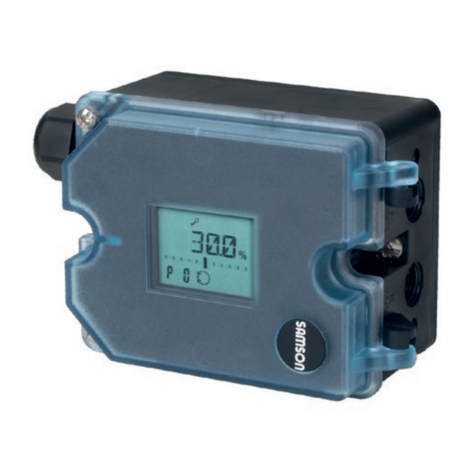
Samson
Samson 3725 series Mounting and operating instructions
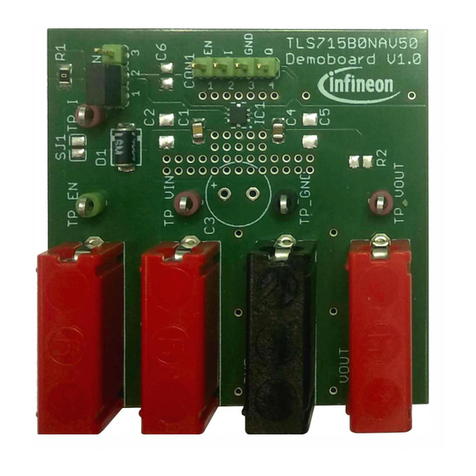
Infineon
Infineon OPTIREG Linear TLS715B0NAV50 user manual
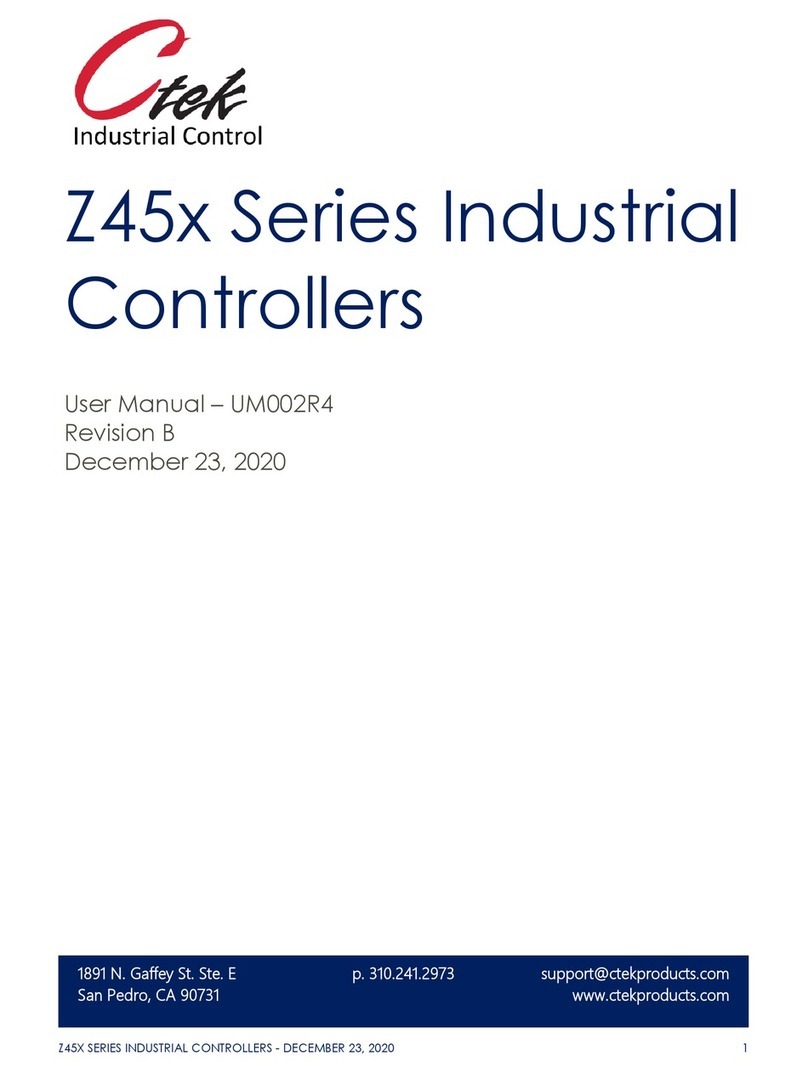
CTEK
CTEK Z45 Series user manual
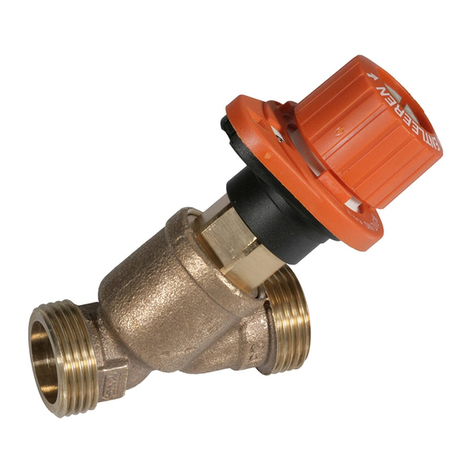
resideo
resideo Braukmann VA2400 quick start guide
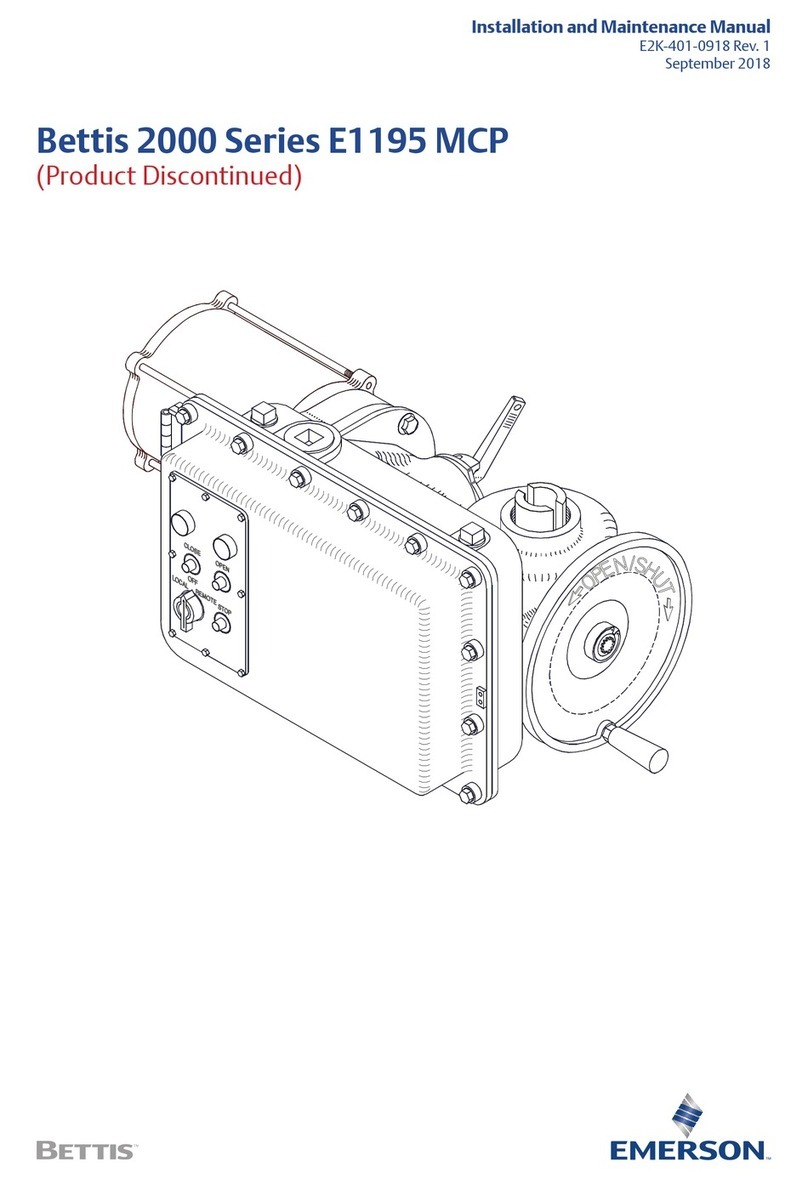
Emerson
Emerson Bettis 2000 Series Installation and maintenance manual
